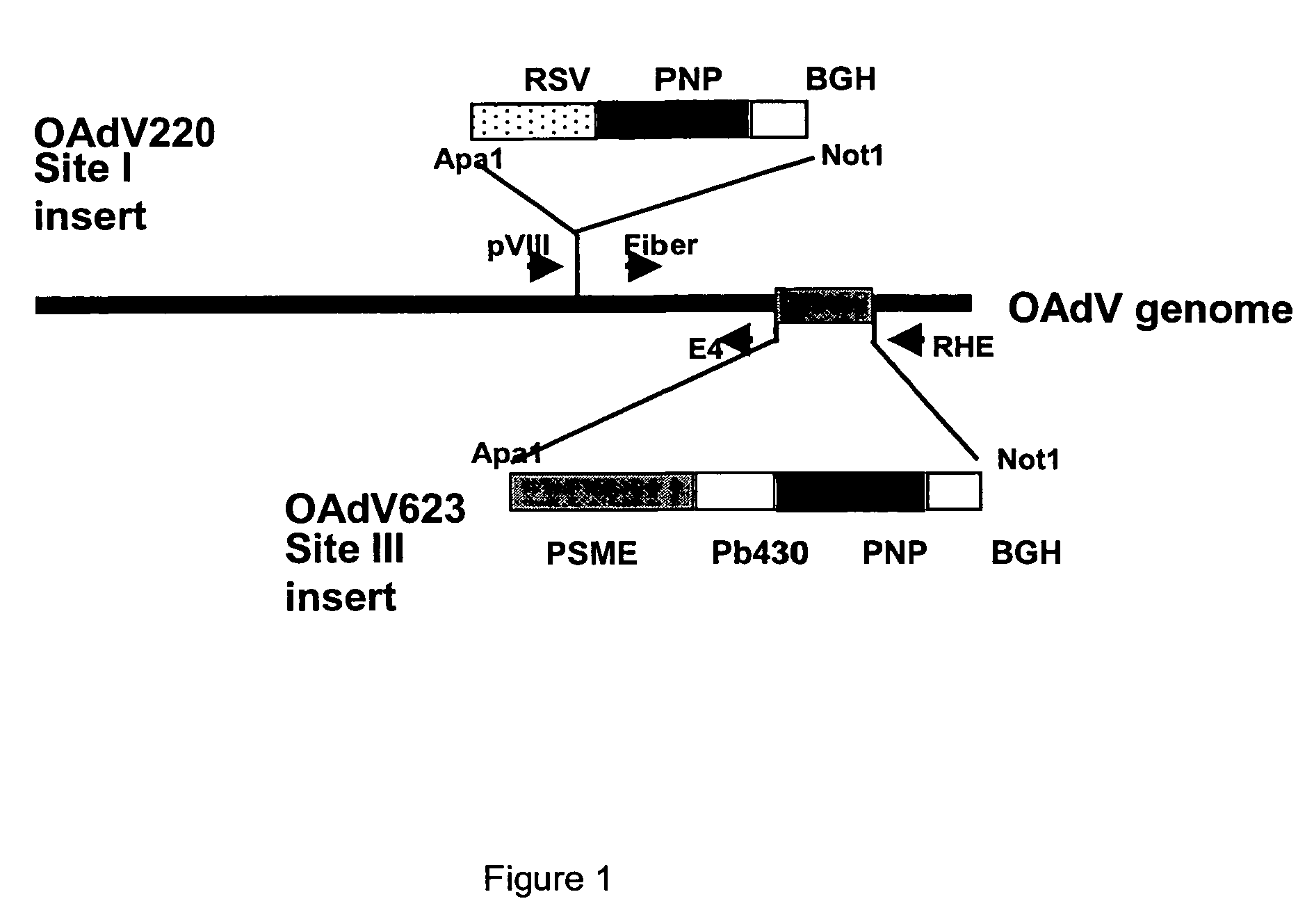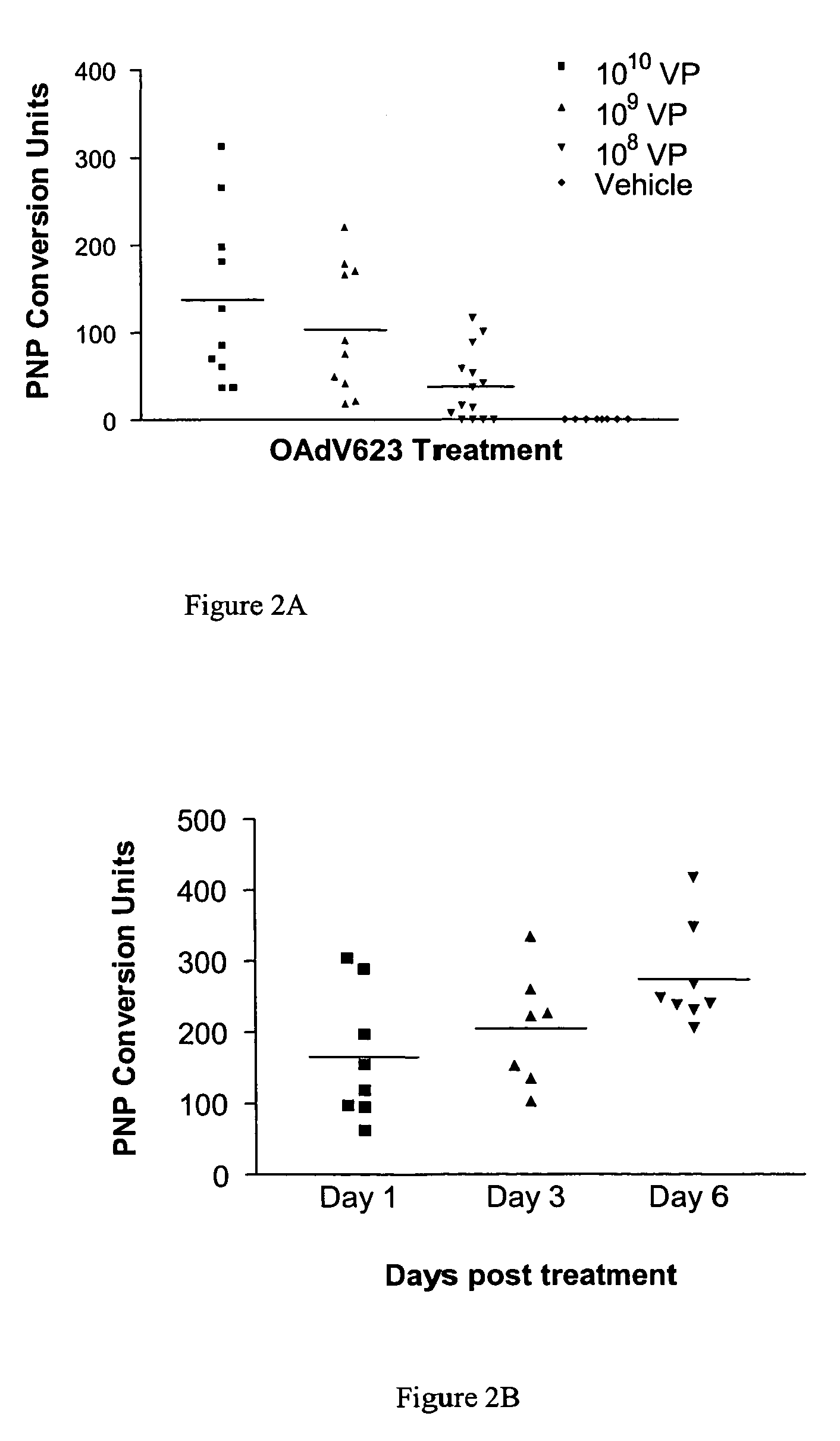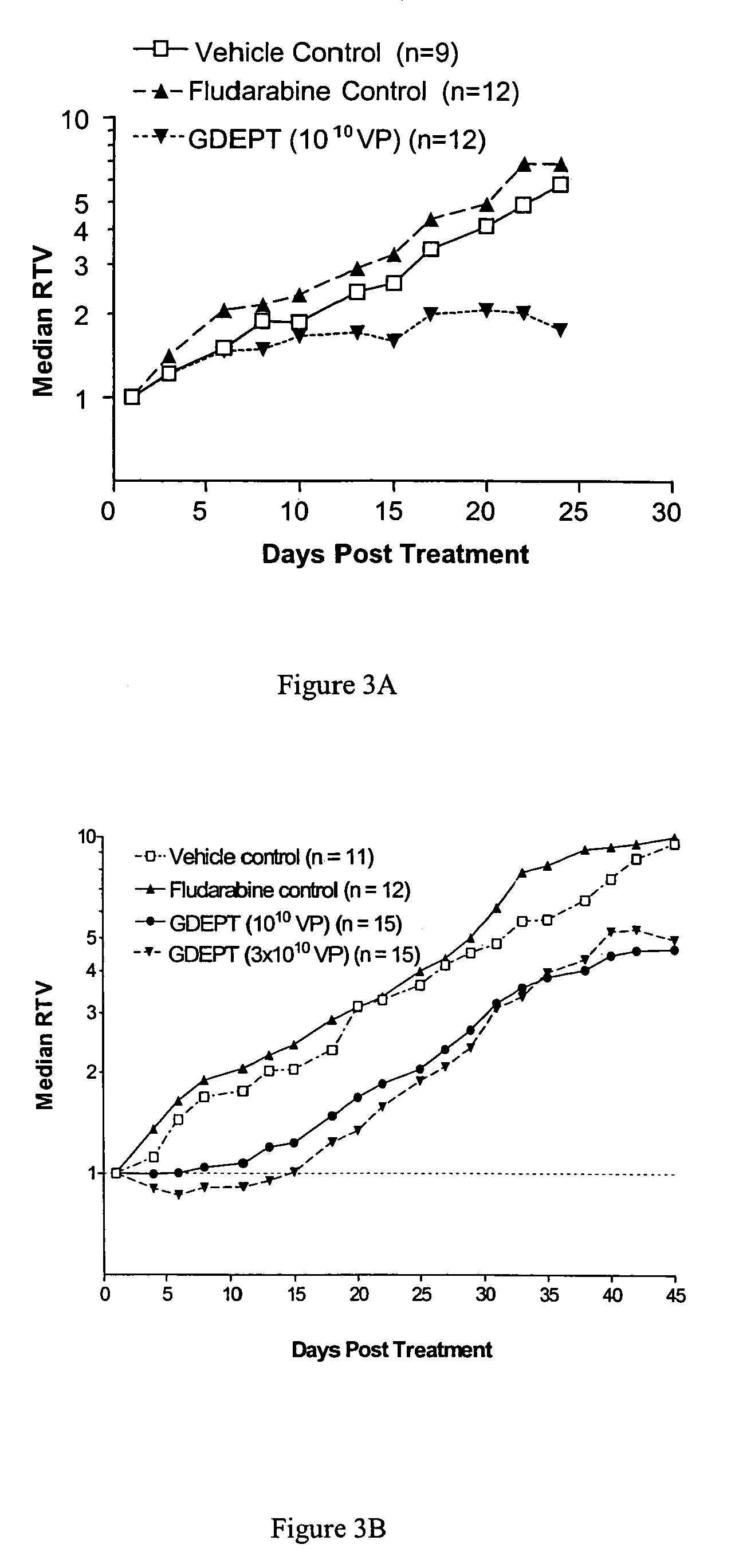Regulatory constructs comprising intron 3 of prostate specific membrane antigen gene
a prostate specific and membrane antigen technology, applied in the direction of biocide, drug composition, peptide source, etc., can solve the problems of insufficient region to direct cell type specific expression, immunohistochemical analysis failure, and inability to identify antigenically reactive psma in human brain tissue, etc., to achieve strong prostate specificity and high level expression
- Summary
- Abstract
- Description
- Claims
- Application Information
AI Technical Summary
Benefits of technology
Problems solved by technology
Method used
Image
Examples
example 2
Location and Sequence Analysis of Enhancing Fragments
[0081]The inserts from the clones were re-cloned into pBluescriptSK+ (pBKSEn3 and pBKSEn4) and the sequences of their ends determined. All clones were found to originate from the third intron of the PSMA gene as shown in FIG. 2. The positions of both ends of clones #3 and #4 were identified as shown. The inserts in clones #3 and #4 were aligned in opposite orientations relative to the PSM promoter in the pPSMentrap vector as shown in FIG. 3. The clones share a common overlapping sequence of 1044 bp and extend in total over 2,530 bp. The third clone, #1, derived from the same region, one end being 6 bp upstream of the end of clone #4 and it also contained the SpeI and HinDIII sites contained in the region common to clones #3 and #4. It had, however, undergone some rearrangement on cloning and has not been further studied.
example 3
Function of PSMA Enhancer Region
[0082]The activity of the PSMA enhancer region was first identified by visual inspection of fluorescence intensity of cells transfected with clones carrying PSMA gene inserts upstream of the PSM promoter. In these preliminary experiments it was also noted that the enhancer (clone #4) did not appear to function in the bladder cell line BL13 (not shown). In order to provide for quantitative determination of promoter and enhancer function, enhancers #3 and #4 (hereafter designated En3 and En4) in combination with the PSM 1 kb promoter were re-cloned into two different gene expression reporter systems.
example 4
Expression Assayed in the pCAT3SAT System
[0083]The pCAT3SAT vector contains a modified bacterial chloramphenicol acetyl transferase reporter gene for determining promoter activity and a reference reporter gene, serine acetyl transferase, under the control of the RSV promoter in order to standardise CAT expression for transfection efficiency. It was prepared by cloning the serine acetyl transferase reporter gene from the pCATSAT plasmid (1) as a SalI / BamHI fragment into BamHI, SalI cut pCAT3 vector (Promega). Constructs. pPSM1k-C3S and pEn4PSM1k-C3S, containing the PSM promoter with or without the PSM enhancer fragment 4 (En4) were prepared by cloning the PSM enhancer / promoter fragments as SalI / PstI fragments from the pPSMentrap vector into pCAT3SAT cut at the XhoI and PstI sites in the polylinker upstream of the CAT gene (FIG. 4). A control construct containing the RSV promoter, pRSV-C3S, was also prepared by blunt end ligation of a NaeI to SacI fragment from pCATSAT (1) into the Nh...
PUM
| Property | Measurement | Unit |
|---|---|---|
| Temperature | aaaaa | aaaaa |
| Volume | aaaaa | aaaaa |
| Volume | aaaaa | aaaaa |
Abstract
Description
Claims
Application Information
 Login to View More
Login to View More - R&D
- Intellectual Property
- Life Sciences
- Materials
- Tech Scout
- Unparalleled Data Quality
- Higher Quality Content
- 60% Fewer Hallucinations
Browse by: Latest US Patents, China's latest patents, Technical Efficacy Thesaurus, Application Domain, Technology Topic, Popular Technical Reports.
© 2025 PatSnap. All rights reserved.Legal|Privacy policy|Modern Slavery Act Transparency Statement|Sitemap|About US| Contact US: help@patsnap.com



